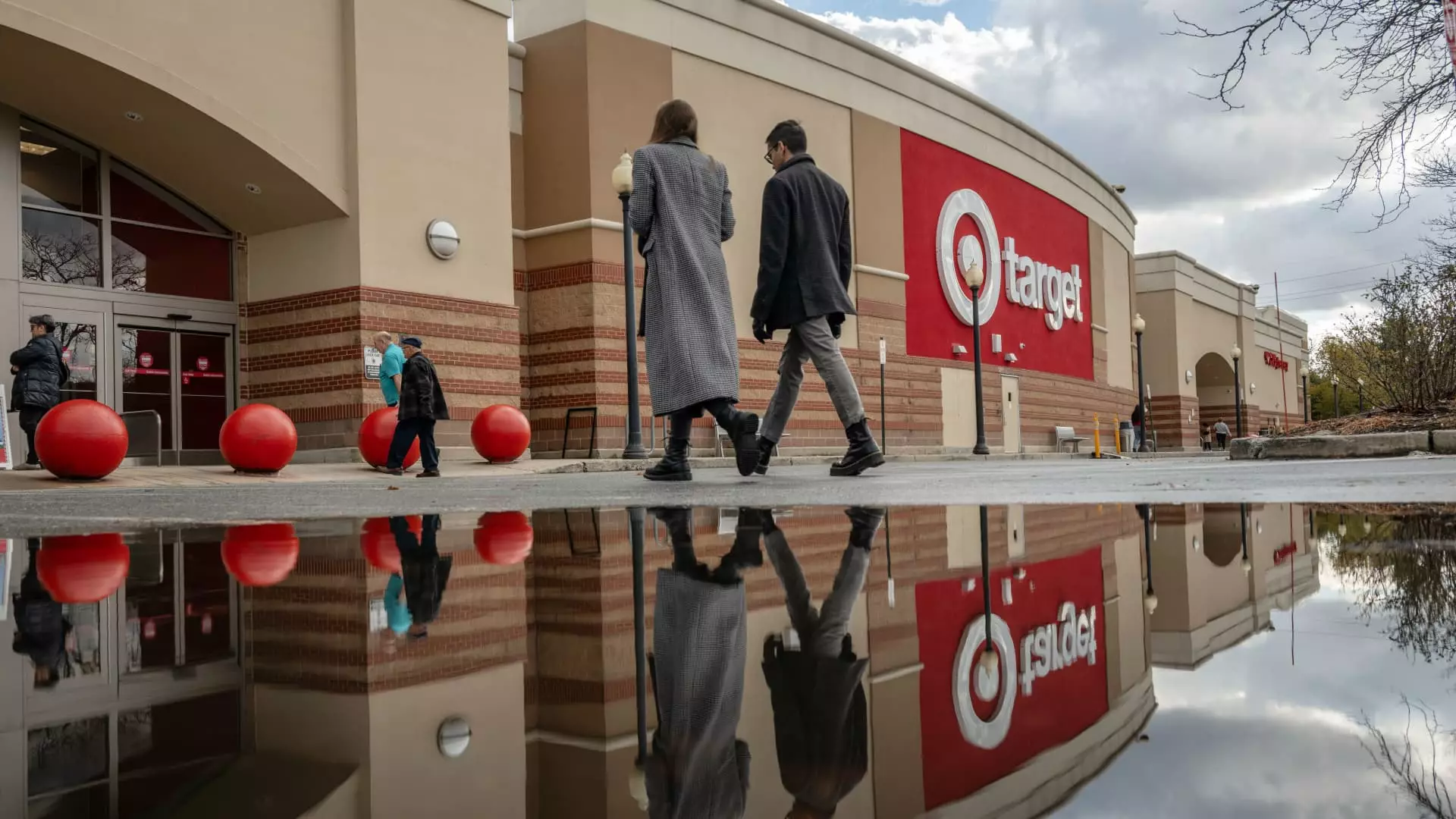As the year approaches its festive conclusion, retailers face both an opportunity and a challenge during the holiday shopping season. While this time traditionally invites enthusiasm and increased consumer spending, the reality is complicated by fluctuating economic conditions. Retailers are eager to attract a wide array of shoppers and encourage splurging on non-essential items, such as festive clothing, makeup, and toys. This year’s holiday season, however, has revealed a disheartening dichotomy among brands; some are flourishing while others falter.
Recent earnings reports from various retailers depict a stark contrast in performance across the industry. On one hand, retailers like Walmart and Dick’s Sporting Goods reported robust sales, owing largely to their strategic positioning and adaptability within the shifting consumer landscape. Walmart’s diversification strategy, which included strengthening its online marketplace and enhancing its general merchandise offerings, has attracted attention amidst a climate of cautious consumer spending. On the other hand, brands such as Target and Kohl’s have struggled significantly, showcasing disappointing results that illustrate the challenges of enticing shoppers in a rapidly evolving market.
Economic pressures have influenced consumer behavior dramatically over the past two years, as inflation forced many individuals to reconsider their spending habits. Even with a slight easing in inflation rates, the habits of choosy consumers signify a pronounced shift towards selectivity, whereby shoppers are inclined to purchase fewer items, prioritizing essential products over discretionary items. This changing dynamic emphasizes the crucial need for retailers to recalibrate their strategies to capture segments of the spending pie effectively.
Amidst these challenges, experts suggest that consumers are gravitating towards value-driven purchasing decisions. According to Neil Saunders from GlobalData Retail, although people are still willing to spend, they are increasingly discerning about where to allocate their funds. The effect is palpable; lower-income shoppers are particularly inclined to cut out retailers perceived as less compelling, thereby exacerbating existing disparities in the retail sector.
While the National Retail Federation forecasts a modest holiday sales increase compared to previous years, ranging between 2.5% to 3.5%, this projected growth pales in comparison to last year’s 3.9% upswing. With modest growth expectations, retailers face pressing challenges to innovate their offerings and engagement strategies. Companies like Abercrombie & Fitch and Dick’s have adopted a much more optimistic outlook, pledging to meet consumer interest head-on. Meanwhile, other retailers, including Nordstrom and Walmart, have expressed a more tempered enthusiasm, acknowledging that shopper caution remains prevalent.
As the holiday season unfolds, those at the lower end of the performance spectrum, such as Kohl’s and Target, confront a significant uphill battle. Declining sales forecasts and diminished foot traffic signal troubling times ahead. Kohl’s forecast indicates an anticipated larger drop in sales than previously expected, raising concerns about the future direction amid the pressures of an intensely competitive landscape. Target, despite attempting to leverage exclusive product offerings tied to popular cultural phenomena, still projects stagnant sales.
Without innovative approaches to entice buyers, there is a genuine risk that inventories could languish—some retailers may have miscalculated their stock levels, leading to an overabundance of the wrong products. Retailers selling largely non-essential items may find themselves particularly vulnerable, as consumers increasingly prioritize gifts that offer practical value.
The retailers able to thrive amidst these challenges will be those demonstrating versatility and an acute understanding of customer preferences. The evolution of consumer spending is forcing businesses to adapt, emphasizing quality and practicality over novelty and excess. Consumers are no longer simply purchasing for the sake of gift-giving; they desire meaningful, functional items that resonate with their lifestyles and needs.
Retailers may also grapple with external factors like economic conditions impacting shopper behavior. Seasonal weather, supply chain issues, and economic downturns provide a convenient backdrop for companies to contextualize their performance, often serving as scapegoats if results fall short of expectations. However, a discerning shopper base will no longer tolerate such explanations without provocation; the emphasis must remain on delivering value, quality, and experience.
As we navigate another holiday shopping season, the divergence between thriving and struggling retailers could not be clearer. The role of product relevance and customer engagement will define this year’s retail landscape, heralding new expectations of value from consumers. Companies that understand this new reality—acknowledging the necessity for adaptation and consumer-centricity—are poised to capture the interest and loyalty of a more selective shopper. As the situation unfolds, retailers must remember that while holidays may come and go, the lessons learned from shifts in consumer behavior are invaluable and lasting, marking a new era in retail strategy.

